Orthodontics Terms
Orthodontic Terms List as Follows
Arch Wire
The part of your braces which actually moves the teeth. The Arch Wire is attached to the brackets by small elastic donuts or ligature wires. Arch Wires are changed throughout treatment, and each change brings you closer to ideal tooth positioning.
Headgear
Often called a night brace, headgear is used to correct a protrusion of the upper or lower jaw. It works by inhibiting the upper jaw from growing forward, or the downward growth of the upper jaw, or even by encouraging teeth to move forward.
Brackets
Brackets are the small attachments that are bonded directly to the tooth surface. The brackets are the part of your braces to which the dentist or assistant attaches the arch wire.
Occasionally, a bracket may come loose and become an irritation to your mouth. You can remove the loose bracket and save it in an envelope to bring to the office. If a bracket becomes loose, call the office as soon as possible and make an appointment to re-glue the bracket.
Elastics (Rubber Bands)
At some time during treatment, it will be necessary to wear elastics to coordinate the upper and lower teeth and perfect the bite. Once teeth begin to move in response to elastics, they move rapidly and comfortably. If elastics (rubber bands) are worn intermittently, they will continually cause more soreness. When elastics are worn one day and left off the next, treatment slows to a standstill or stops altogether. Sore teeth between appointments usually indicate improper wear of headgear or elastics or inadequate oral hygiene. Wear your elastics as instructed by your orthodontist. Take your elastics off while brushing. Change elastics as directed, usually once or twice a day.
Malocclusion
Poor positioning of the teeth.
Types of Malocclusion
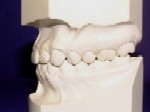
Class I
A Malocclusion where the bite is OK (the top teeth line up with the bottom teeth) but the teeth are crooked, crowded or turned.
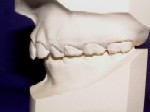
Class II
A Malocclusion where the upper teeth stick out past the lower teeth. This is called an overbite.
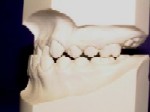
Class III
A Malocclusion where the lower teeth stick out past the upper teeth. This is also called an underbite.
Occlusion
The alignment and spacing of your upper jaw and lower teeth when you bite down.
Types of Occlusion
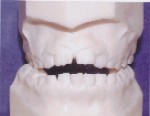
Openbite
Anterior opening between upper and lower teeth.
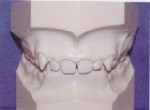
Overbite
Vertical overlapping of the upper teeth over the lower teeth.
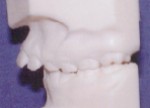
Overjet
The horizontal projection of the upper teeth beyond the lower teeth.
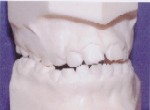
Crossbite
When top teeth bite inside the lower teeth.
It can occur with the front teeth or back teeth.
O Rings
O rings, also called A-lastics, are little rings used to attach the arch wire to the brackets. These rings come in a wide variety of colors to make braces more fun. A-lastics are changed at every appointment to maintain good attachment of the arch wire to the bracket, enabling patients to enjoy many different color schemes throughout treatment.
Separator
 A plastic or rubber donut piece which the dentist uses to create space between your teeth for bands.
A plastic or rubber donut piece which the dentist uses to create space between your teeth for bands.
